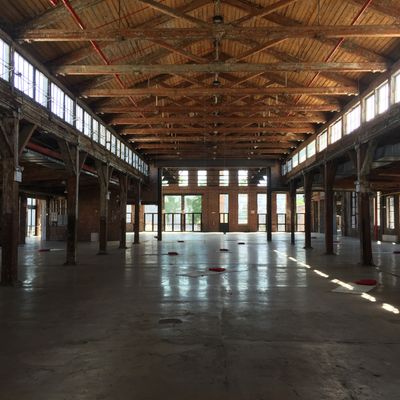
I donÔÇÖt think IÔÇÖve ever had my breath taken away in New York the way I did when I first set eyes on the artist-run operation in Queens known as Knockdown Center. Not only did I not feel like I was in New York, I remembered the jealousy I always feel when IÔÇÖm in Berlin or Los Angeles, walking in off some street through an unassuming doorway to a hidden huge courtyard and a magical vast building for art. I was staggered at what I saw, and then starting seeing, as possible art-world futures. New York must have a lot of derelict industrial spaces like this, in Maspeth and elsewhere, I thought. It was the most hopeful real-estate moment IÔÇÖve had in New York since the days of the East Village in the early 1980s (or maybe since galleries settled Chelsea in the 1990s). Somehow the man who saved Knockdown Center from developers coveting the site found a way to transform this magnificent 50,000-square-foot former door factory into a ÔÇ£radically cross-disciplinaryÔÇØ space devoted to ÔÇ£diverse formats, nourishing experimental impulses, questioning traditional notions of authorship, cultural production, and reception.ÔÇØ The space also ÔÇ£accepts proposalsÔÇØ for shows. You can propose something. I met an artist who did and the show is there now.
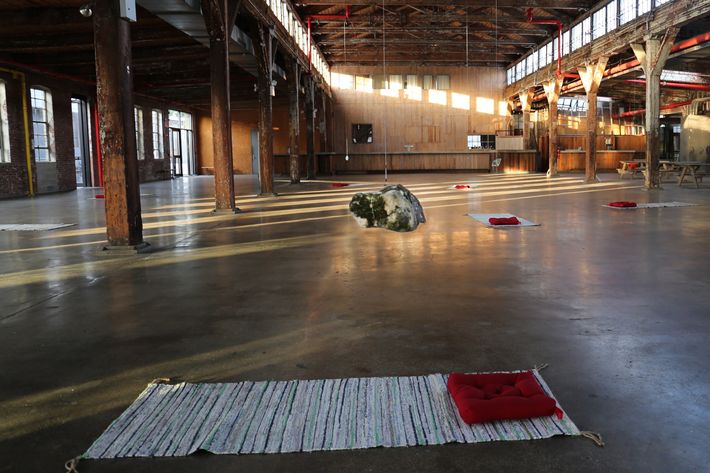
I thought I knew whatÔÇÖs what in much of New York. But the place has been having exhibitions for four years and IÔÇÖd never heard of it till artist Liz Nielsen told me about it. I was visiting her and her girlfriendÔÇÖs teeny Bushwick storefront gallery┬áElijah Wheat Showroom┬áto see the work of a few young artists. As I was leaving she told me that she and her partner curated a show at Knockdown Center. (ÔÇ£WhatÔÇÖs that?ÔÇØ) When she told me it was 50,000 square feet I didnÔÇÖt want to go. I thought itÔÇÖd be another gigantic slick space with collector baubles and a couple of little independent projects to lend cred. She persisted.
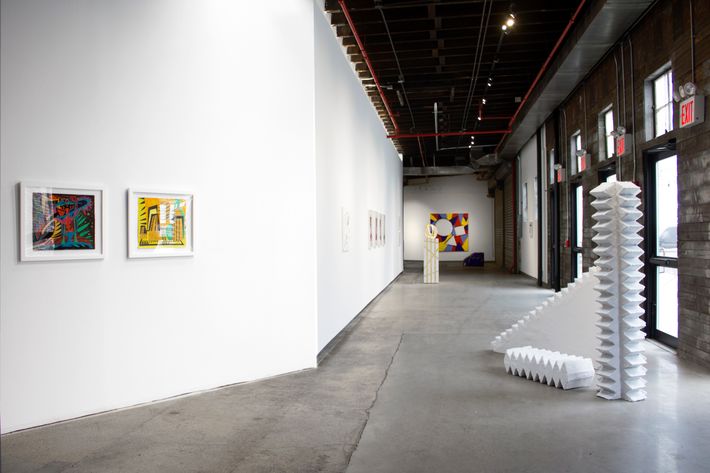
When I pulled up in front of the space on Flushing Avenue I was sure I was in the wrong place. All I saw was an open roll-up garage door. Another car-parts-and-auto-glass place? I walked in. A large cracked blacktop courtyard. Total quiet off the street. Then this 100-year-old big red brick building. Amazed, I walked up a few stairs thinking ÔÇ£every Lower East Side gallery could fit into this complex of buildings.ÔÇØ The space was entirely open, not a wall in sight, just wooden arched roof, beams, and columns, clerestory windows, light, and the erotics of open contained space. Around a corner was another internal outdoor space, this one with the ruins of brick buildings.
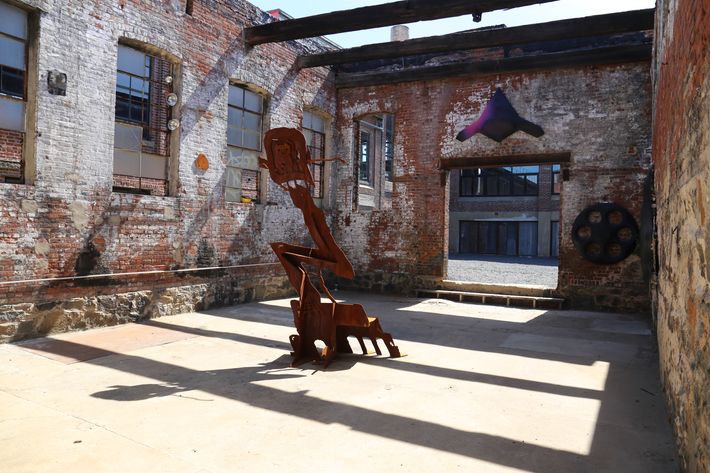
Michael Merck, one of the spaceÔÇÖs two artist-organizers, talked about Knockdown as ÔÇ£a tool for people to do things they canÔÇÖt do.ÔÇØTransaction,ÔÇØ┬áthe show curated by Nielsen and Carolina Wheat, is 23 objects, each one a ÔÇ£special thing,ÔÇØ given by an artist, suspended by a wire over a mat and red pillow. Magic happened as I read the simple thumbnail explanations from each artist. Carol Bove supplies a ÔÇ£mystic tokenÔÇØ made of┬á ÔÇ£unknownÔÇØ material that she dreamt about the night before she saw it; Yevgeniya Baras, a piece of fabric she found in the streets of Jaipur that to her has ÔÇ£code embeddedÔÇØ; Kenrick McFarlaneÔÇÖs is a photograph of his parents embarked on ÔÇ£working their way up from Jamaica to the US in search of a better life.ÔÇØ The whole show glows like this. Nearby, another show gives us the late unknown Chicagoan John Schacht and the very excellent twisted sculptures and surfaced paintings of Anna Mikhailovskaia. A real artist to watch. Rounding out the offerings, a three-person sculpture show fills the ruins outdoors.
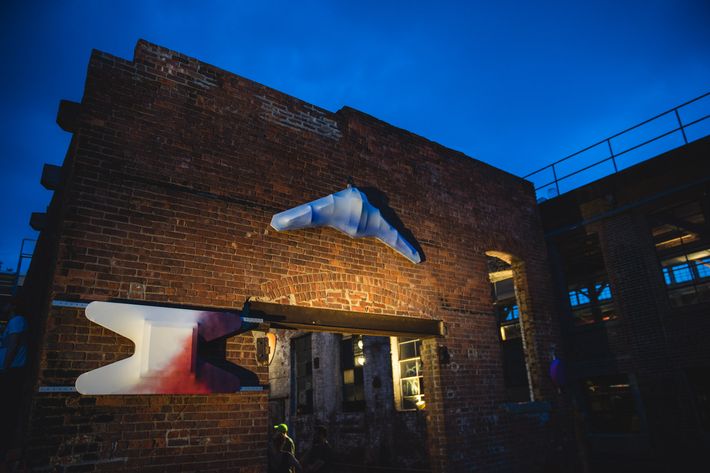
Back in my car, I sat for a few minutes. Three broadening shows; great spaces; a sense of real promise about a generation of artists finding ways to make an art world out of themselves despite financial odds; creating places in neighborhoods without displacing anyone, showing and supporting one another. The whole experience resonated with similar assuring signs IÔÇÖve seen like this all over the city, coming from energies and art on the Lower and Upper East Sides, in Bushwick, Brooklyn, Harlem, even in Chelsea and elsewhere. I left with no cynicism, knowing that artists, art, the system and the city is more self-repairing, activated, porous, and open than we know. Art always finds a way.

